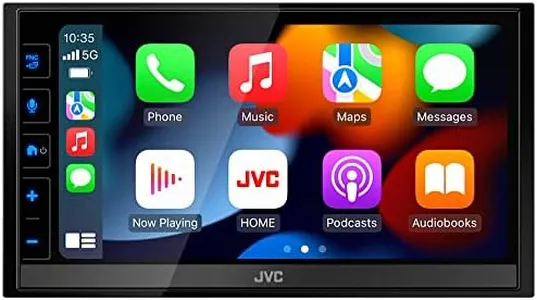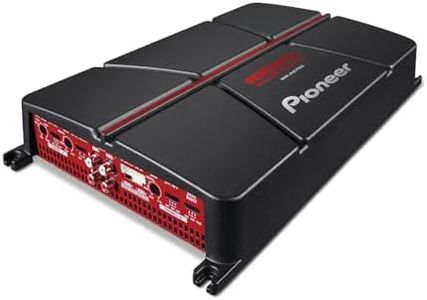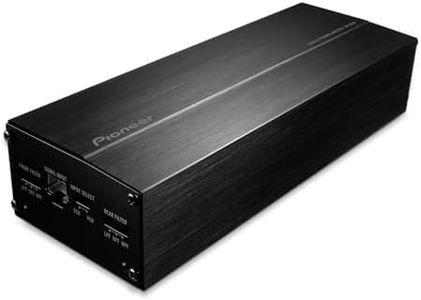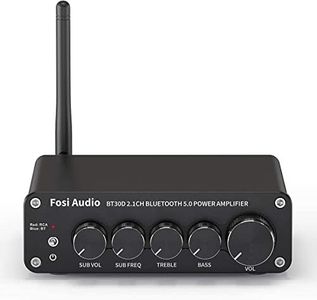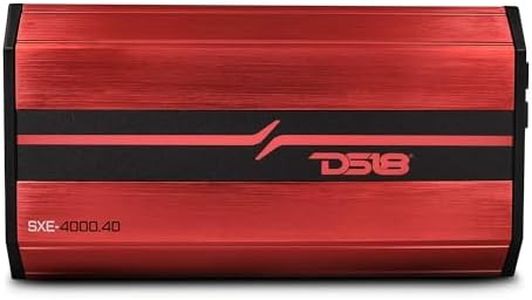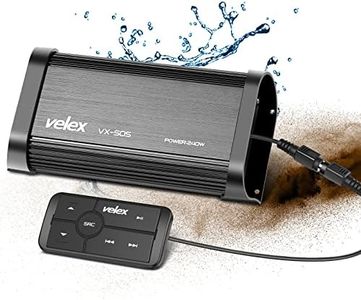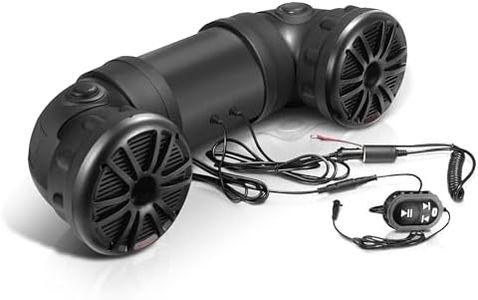We Use CookiesWe use cookies to enhance the security, performance,
functionality and for analytical and promotional activities. By continuing to browse this site you
are agreeing to our privacy policy
10 Best Bluetooth Car Amp
From leading brands and best sellers available on the web.By clicking on a link to a third party's website, log data is shared with that third party.
Buying Guide for the Best Bluetooth Car Amp
Choosing a Bluetooth car amplifier is a great way to bring modern wireless audio capabilities to your car without replacing the existing head unit. The right amp can improve your sound quality, give you more power for your speakers or subwoofers, and simplify how you play music from your phone or other devices. When shopping for such an amp, it’s important to focus on features that match your listening habits, car setup, and expectations for sound. Understanding the main specifications will help you make a choice you’ll be happy with for years to come.Power Output (Watts RMS)Power output, often listed as RMS watts per channel, tells you how much consistent power the amp will deliver to your speakers. Higher power means clearer sound at a higher volume, with less risk of distortion. Small speakers or factory replacements do well with lower power (around 25-50 watts RMS per channel), while aftermarket speakers and subwoofers often need more (50-100 watts RMS or higher). Choose an amp that matches or slightly exceeds the recommended wattage for your speakers to get the best performance without damaging them.
Number of ChannelsThe number of channels refers to how many separate speakers or subwoofers you can connect. A two-channel amp is good for powering just your front speakers or a subwoofer, while a four-channel amp can run both front and rear speakers. Mono amps are single-channel and focused on driving powerful subwoofers. Consider how many speakers you have or plan to upgrade; matching the channel count to your speakers gives you flexibility and proper sound distribution.
Bluetooth VersionBluetooth version determines the quality and stability of the wireless connection. Newer versions (like 5.0 and above) offer better sound quality, faster connection, and greater range, but basic music streaming works well on even older versions (like 4.x). If you care about low-latency and reliability, opt for a model with a newer Bluetooth version. This is especially useful if you want strong connectivity when several devices are connected in the car.
Input/Output OptionsThe types of inputs and outputs on an amp affect how you connect your music sources and speakers. Some amps offer only Bluetooth and RCA inputs, while others add auxiliary or optical connections. Output options should match the types of speakers or subs you plan to install. If you want to use your phone exclusively, Bluetooth is enough, but if you want to connect other sources, more input choices give you flexibility.
Size and Mounting OptionsCar amplifiers come in a range of sizes, from compact models that fit under a seat to larger units that need space in the trunk. The right size depends on where you plan to install the amp and how much room you have available. Make sure to check the measurements and compare them to your car’s available space to avoid installation headaches. Smaller vehicles or hidden installations usually require a more compact amp.
Built-in Features (Filters, EQ, Remote, etc.)Some amps come with built-in features like crossovers, bass boost, equalizers, or remote controls. Crossovers and EQs let you adjust the sound to match your speakers or tastes, while a bass boost can add extra thump to your subwoofer. Remote controls make it easier to adjust settings on the go. Choose features that support your preferred music style and how much control you want over your audio.
